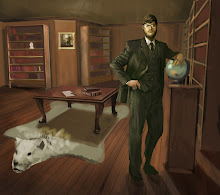Much of the material and discussion I encounter in my education classes is focused on social justice and those ideas have an interesting interaction with the dilemmas faced by classroom teachers everywhere. I wrote earlier that I am critical of approaches which seem to focus a curriculum on examining specific issues of social justice without recognizing that education has another form of justice to which it ought to aspire; namely, students need to acquire the skills and knowledge to be able to succeed and empower themselves. Without accomplishing the latter goal, what good is teaching students to be critical? My readings for class recently have helped illuminate why this makes sense and I'm going to share some of that here.
Barbara Comber argues that there are issues of economic justice which should motivate teachers to teach "critical literacies" so as to help prepare their students to compete in a world of ever increasing inequality. She pulls from Piketty's comment that people who own only their own labor are at risk for being left out of income growth and other opportunities. The moral imperative is for teachers to push students toward more knowledge production skills, chiefly critical literacy. To accomplish this, she thinks students should be "researchers of language" - that they should not just learn the content but also learn how a particular field approaches and solves problems. That is, in short, teaching literacy instead of teaching content. Being critical, in Comber's case, applies to that role of students as language researchers. Once they take on that role, they can challenge flaws and argue for improvements.
I think Comber threads the needle on this issue very well. She repeats again and again that critical literacies do entail a focus on the forces that create inequality and injustice but she doesn't think that is the measure of good critical literacy. I struggle, sometimes, to articulate this concept in discussions so it's nice to see someone do it better than I can. Overall, I don't know if I agree with the economic framing if only because so many education reformers reduce the role of education to job preparedness. Her use of Thomas Piketty is crucial, as he argues for significant social reforms and redistribution which I think education reformers would be uncomfortable with.
Second, I have another article about the role of critical literacy in education. Hilary Janks provides a more conventional justification for teaching critical literacies: combating social injustice through education.
In the actual world—where a 17-year-old boy sells one of his kidneys for an iPad; where adult men rape babies; where rebel fighters video themselves mutilating and cannibalizing the body of an enemy soldier to post on YouTube; where imprisonment without trial and tor- ture are condoned; where children are molested by adults they trust; where millions of people lack access to drinking water or sanitation; the list is endless—it is even more important that education enables young people to read both the word and the world critically
Again, I worry about these kinds of approaches because I want tone sure students are not just getting a crash course in how fucked up the world is. They need to tools and the ability to fix it, too. She walks us through a lesson she's taught about access to clean drinking water and includes examples of data, photos, and other texts she brings to the students as they analyze the issue. The students are challenged to think about who gets access to a valuable resource, water, and how it is unevenly distributed. In a social studies context, I think this less works well and can fit both a pedagogy of social justice and a socially just pedagogy. The students don't stop at learning about a problem, they are assessing how the language creates and distributes power. I see this as a task very much inside the domain of a social scientist and the students are, therefore, going to be acting and thinking like a social scientist would. Lastly, the presence of solutions to externalities (plastic pollution) means there's a solution mindset which urges the students to be an active part of making things better. The connection to student empowerment is there.
For me, these both helped me understand what a socially just pedagogy looks like that also engages specifically in teaching about a specific issue of social justice. I am, maybe, just a little, possibly, biased in favor of more traditional classroom approaches if only because I see so much emphasis on social justice curriculums and so little on making sure the kids can be successful. As I move into the fall and begin more specific coursework related to teaching literacy, I will have to be more open to how social justice can be woven into a socially just kind of teaching.

No comments:
Post a Comment